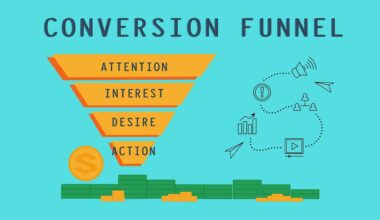The Role of Notifications and Their Timing in Engagement
In today’s digital landscape, notifications play a crucial role in how audiences engage with content. From social media updates to email alerts, notifications serve as reminders that entice users to revisit platforms. When executed effectively, these notifications can significantly boost user engagement. However, it’s essential to consider the timing and nature of these alerts. If notifications arrive at inappropriate times, such as during late-night hours, they may lead to annoyance and disengagement. Therefore, marking strategic times to send notifications based on user behavior is crucial. Analyzing user habits can help organizations determine optimal times for sending alerts. Thus, much focus should be placed on personalizing notifications to align with user preferences and habits. Businesses that thrive on consumer engagement must invest time and resources into understanding audience behavior. Notifications should be seen not as simple alerts but as vital tools that can enhance user experience. Using analytics, companies can adapt their strategies to ensure notifications foster a connection between users and content. Ultimately, the role of notifications goes beyond merely informing—it’s about creating opportunities for deeper engagement.
Understanding the psychology behind notification responses is vital in crafting effective engagement strategies. Notifications that resonate personally with users often lead to higher interaction rates. For instance, utilizing names or personal data in notifications can capture attention more effectively. When users feel a sense of personal connection, they are more likely to engage with the content presented to them. Additionally, the emotional tone of these notifications plays an important role in audience reception. Using positive language tends to elicit better responses than neutral or negative wording. Companies should also consider cultural differences in message reception. What engages one audience might not resonate with another, necessitating tailored approaches. Furthermore, A/B testing can be beneficial in evaluating notification effectiveness. Testing different styles, tones, and timings allows brands to fine-tune their messaging strategies. Ideally, companies should test varied notifications to assess audience reactions. This ongoing optimization not only enhances future engagements but also builds trust with the audience. By keeping their audience engaged in a meaningful way, brands can foster a loyal following that looks forward to their messages.
Timing and Frequency of Notifications
Timing is a pivotal element that affects recipient response rates to notifications. Too many alerts can overwhelm users, often leading to notification fatigue. When users feel bombarded, they might disable notifications or even disengage entirely from the platform. Thus, finding a balance in frequency helps maintain engagement levels. In contrast, strategically timed notifications can significantly enhance the likelihood of positive reception. For example, targeting users when they are most active on the platform increases the chances of interaction. Event-based notifications tied to user activity, such as reminders for product releases or live event alerts, can catch attention at peak engagement moments. Furthermore, taking note of the user’s time zone helps ensure that notifications are sent at convenient hours. When users receive alerts during appropriate times, the chances of clicking and engaging rise dramatically. Hence, businesses should utilize data analytics to determine the best times for their specific audiences. Keeping a pulse on timing directly correlates with building an effective communication strategy that enhances user experience while driving meaningful engagement.
Incorporating dynamic content into notifications can lead to heightened engagement rates. By utilizing data-driven insights and segmentation strategies, businesses can personalize notifications based on user interests and preferences. This approach ensures that users receive alerts that are relevant and appealing. For instance, if a user frequently interacts with certain types of content, sending tailored notifications related to that content can effectively capture attention. Personalization fosters an emotional connection, making users feel recognized and valued. A well-timed and well-worded notification can significantly influence user behavior. Studies have shown that personalized notifications generate higher open and click-through rates compared to generic messages. Therefore, businesses should invest in developing a robust understanding of their audience’s preferences to craft compelling notifications. Additionally, through iterative testing and feedback loops, brands can continually optimize their messaging. As personalization becomes more integral in user engagement, businesses must adapt to meet these expectations. Notifications should reflect a deeper understanding of user needs, propelling brands toward creating a more engaged community that thrives on targeted interaction.
The Impact of Push Notifications on User Behavior
Push notifications have emerged as a significant component of digital engagement strategies. They provide a unique opportunity to connect with users, driving immediate interaction if executed properly. The effectiveness of push notifications largely depends on their timing and relevance. When users receive them at strategic moments, it enhances the likelihood of immediate engagement. Additionally, push notifications that integrate gamification elements can incentivize user actions. Such strategies can drive users toward participating in events or promotions through excitement. Incorporating restricted time offers or exclusive content also fosters urgency among users, encouraging them to act promptly and engage. However, it’s essential to ensure that these notifications do not become overwhelming. Balancing frequency with meaningful content is crucial in retaining user interest. As such, brands must also monitor response rates and adjust their strategies accordingly. Always keeping user preferences in mind will create a favorable relationship with the audience. Investing in developing an attractive value proposition within these notifications significantly enhances user experience and engagement, ultimately fostering long-term relationships.
Beyond push notifications, leveraging in-app notifications can significantly enhance user engagement. Unlike traditional forms of communication, in-app notifications are displayed while users are actively engaged with an application. Therefore, their effectiveness may be more immediate since users are already in a receptive environment. Such notifications can effectively guide users toward important features, updates, or actions within an app. Again, timing is crucial; aligning these notifications at moments when users seek guidance can elevate their experience. For example, prompting users for feedback right after a purchase can increase response rates. Additionally, in-app notifications allow for richer content presentation, including images and links. This visual element can make notifications more engaging and informative. Such notifications not only drive immediate engagement but can also educate users about features or promotions they might not have otherwise noticed. In this way, combining effective design and timing can create a seamless user experience. Analyzing user behavior within the application further enables brands to send highly relevant in-app notifications that enhance overall interaction and engagement.
Conclusion: Crafting Effective Notification Strategies
Ultimately, crafting effective notification strategies hinges on understanding audience behavior and preferences. Companies must take a holistic approach to balance timing, frequency, and content to create notifications that engage and inform users. As user preferences continue to evolve, staying informed through analytics helps fine-tune notification strategies. Businesses should also remain adaptable, incorporating user feedback and trends to refine their messaging. Personalized notifications, whether through push or in-app engagements, will continue to reshape audience interactions. Furthermore, time-based notifications tied to user activity ensure the messages resonate when users are most likely to engage. By investing in notification strategies, brands can foster trust and loyalty, making notifications a welcome aspect of the user experience rather than an interruption. The focus should be on providing real value through notifications, ensuring users perceive them as helpful rather than bothersome. Ultimately, well-timed, relevant notifications can lead to heightened audience engagement, creating opportunities for deeper connections between users and brands. Strong notification strategies can transform audience interactions, ultimately driving growth and enhancing brand loyalty.
This article underscores the important role of notifications in audience engagement. Through effective timing and dynamic content, companies can enhance user experience and foster loyal relationships. By prioritizing user preferences, businesses can create notifications that resonate.


